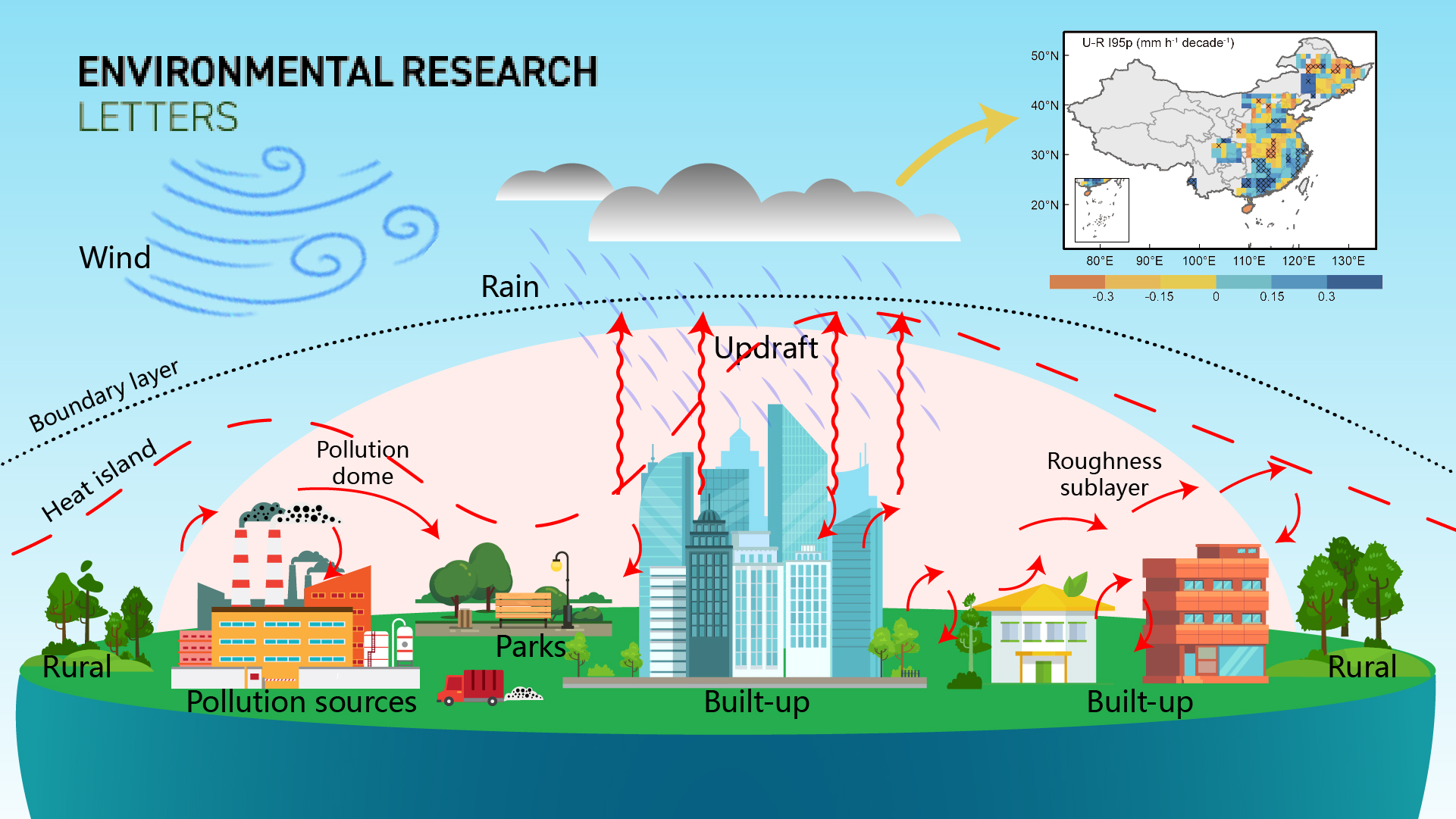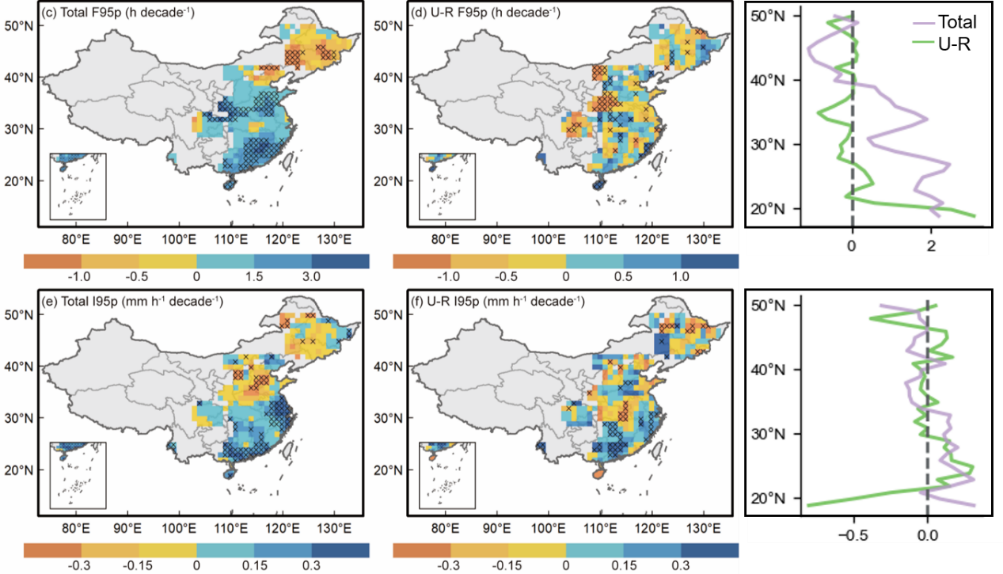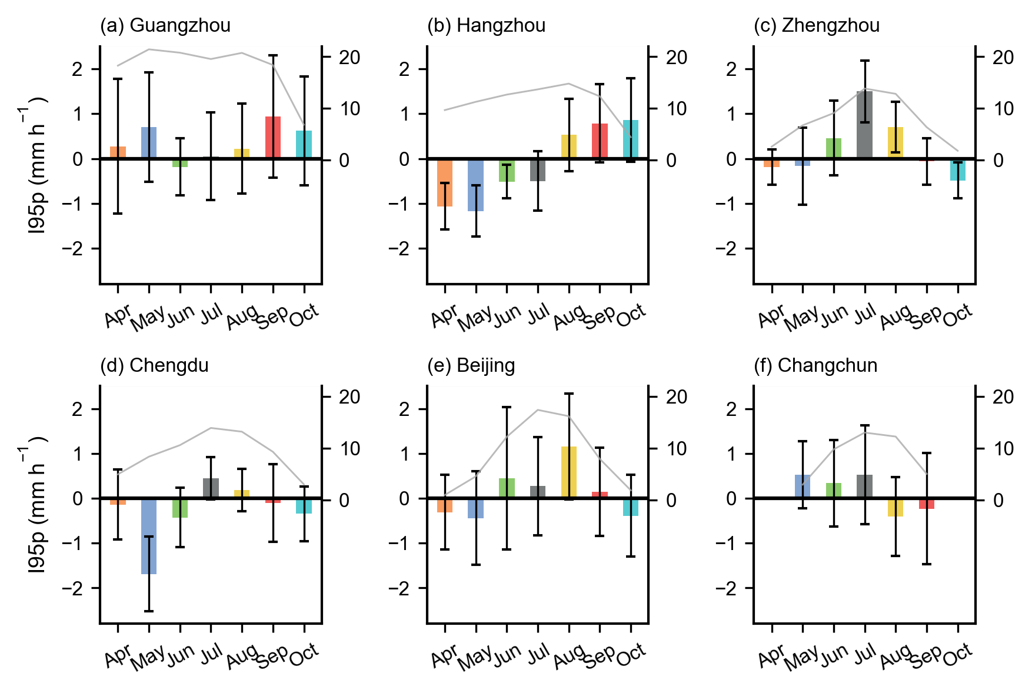Recent rapid urbanization worldwide resulted in increasing urban residents. Short-term (sub-daily) precipitation extremes are expected to be more frequent and intense than in the past as the global climate continues to warm. Many urban areas worldwide have witnessed the consequences of extreme precipitation events, resulting in devastating waterlogging and flash flooding. China has experienced rapid urbanization since the 1980s. During this period, the country has suffered many recent severe urban flooding episodes, causing great casualties and economic losses. However, most of the work has been performed for only a few metropolitan areas. The knowledge of the effects of urbanization on precipitation at regional-to-national scales in China remains limited.

Xiaowen Huang, an undergraduate of the School of Environmental Science and Engineering at the Southern University of Science and Technology (SUSTech), was part of a research team that has recently published their results on the impact of urbanization on hourly extreme precipitation in China. The paper, entitled “Influence of urbanization on hourly extreme precipitation over China,” was published in Environmental Research Letters.
Based on hourly precipitation data from April to October from more than 2000 meteorological stations and annual urban land cover change data in China during 1985-2012, the researchers analyzed the spatiotemporal pattern of urbanization-induced variation in frequency and intensity of hourly extreme precipitation in the rainy season of 28 years by adopting dynamic urban-rural station classification method. The study found that urbanization in south China brings more extreme precipitation to urban areas than to suburbs and continually reduces extreme precipitation over urban areas in parts of the north and northeast.
Six specific regions were selected to explore further the impact of urbanization on extreme precipitation in each month of the rainy season. The diurnal cycle of precipitation difference between urban and rural areas was analyzed by selecting the months with a larger urban-rural difference in each region. Urbanization enhances extreme precipitation mainly in the main local part of the rainy season and increases hourly extreme precipitation at peak times in diurnal cycles.

Figure 1. Spatial distribution of linear trend of extreme precipitation frequency and intensity over China for all-station anomalies and urban-rural differences, 1985-2012, along with their zonal means

Figure 2. Seasonality of the urban-rural difference of extreme precipitation intensity (unit: mm h-1) in the six regions, 1985-2012
The study reveals the impact of urbanization on the spatiotemporal pattern of extreme precipitation over China, including smaller size cities separated from large urban agglomerations. These patterns warrant attention when assessing the risk of increased waterlogging and flash flooding, and provide insights into future hazard mitigation in urban areas.
Xiaowen Huang from SUSTech is the first author of this paper. Associate Professor Zhenzhong Zeng and Research Assistant Professor Dashan Wang are the co-corresponding authors.
This study was supported by the National Natural Science Foundation of China (NSFC), the China Postdoctoral Science Foundation, and SUSTech.
Paper link: https://iopscience.iop.org/article/10.1088/1748-9326/ac59a6
To read all stories about SUSTech science, subscribe to the monthly SUSTech Newsletter.
Proofread ByAdrian Cremin, Yingying XIA
Photo By